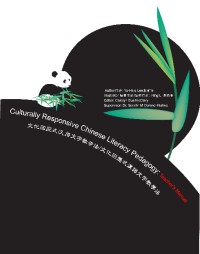Book Features 本书特色/本書特色

Preface 前言
This book is a teacher’s manual (教师手册/教師手冊), designed for anyone teaching Chinese as a second or foreign language. Teachers, one-on-one tutors, college instructors, home schooling parents, or online teachers using Skype, MSN Messenger, VOIP (Voice Over Internet Protocol) can use this book in teaching English speaking students. It could also be used for bilingual education and multicultural education when teaching Chinese as a second or foreign language.
Section I introduces components of Chinese literacy. Section II helps students personalize Chinese literacy. Each section has objectives, lesson plans, and classroom activities to provide a structure for learning. Supplementary materials are listed and worksheets are provided that will facilitate teaching and learning. Experienced teachers can use this book as a resource to enrich an existing program for teaching Chinese as a second or foreign language.
Internet Instruction: How It Works?
如何用网络沟通方式学中文/如何用網路溝通方式學中文
Both the teacher’s manual and the student workbook are designed for Internet-based Chinese teaching and learning. They are NUMBERED, LABELED, and CATEGORIZED in an easy-to-follow style, so worksheets and charts in the supplementary materials are easy to locate.
If you use the Internet for teaching or learning, here are some helpful ideas. Use webcams so students and teachers can see each other. If you design your own curriculum and E-lesson handouts, email the lesson handouts using Microsoft Word files or PDF files to your students before meeting them online for class. Your students will have preview of what they will learn. Use consistent terms when identifying parts of your lessons for your students. Lesson parts are labeled with Roman numerals (e.g., I, II, III, IV, etc), Arabic numbers (e.g., 1, 2, 3, etc), capital letters (e.g., A, B, C, etc), and lowercase letters (e.g., a, b, c, etc) making it easy for students to identify the part referred to by the teacher.
What is Culturally Responsive Chinese Literacy Pedagogy?
什么是文化回应式中文教学法? 什麼是文化回應式中文教學法?
Culturally Responsive Teaching is what sociologist Robert Merton called a "theory of the middle range." It attempts to draw on sociolinguistic principles to inform the practical affairs teaching, assessment, and curriculum development. In particular, this approach is aimed at helping teachers see their classrooms as ecologies of language, culture, and thought Ecologies. The historical and social patterns of thought that populate such are conveyed though common metaphors, various nonverbal form of communication and naming as well as though the uses of power and the organization of experience. The teachers' role is to help students recognize the ecologies of which they are a part, and to support their students' abilities to mediate the many forms of culture that impinge upon environmental and cultural sustainability.
~This definition is given by Dr. David, J, Flinders, Curriculum Studies Graduate Programs, School of Education, Indiana University Bloomington.~
Culturally Responsive Chinese Literacy Pedagogy is an outgrowth of Culturally Responsive Teaching. It draws from the same principles as Culturally Responsive Teaching, but applies it to the field of Chinese as a Second Language or Foreign Language Pedagogy. This book encourages teachers to use students’ native languages and cultures as resources to build knowledge of Chinese and the Chinese culture.
